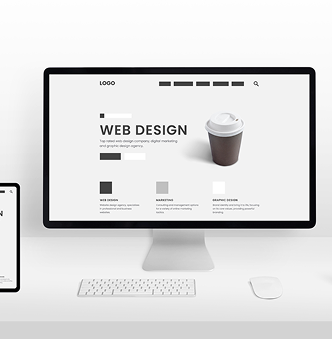How Minimalist Web Design is Winning Indian Consumers
How Minimalist Web Design is Winning Indian Consumers

In a fast-moving digital landscape, less is increasingly more—especially in the eyes of Indian consumers. As users across the country grow more tech-savvy and time-conscious, websites with clean, simple, and intentional designs are capturing their attention and trust. At Obnov, we've witnessed a strong shift toward minimalist web design as a leading digital marketing trend in India, and it's no surprise why it's becoming a powerful tool for engagement and conversion.
The New Face of Digital Clarity
Minimalist design is more than an aesthetic choice. It's a usability strategy. With fewer elements on screen, users can navigate websites faster, focus on key messages, and take desired actions without friction. In India—where varied internet speeds and device performance can impact user experience—lightweight, focused websites perform significantly better.
Faster Load Times, Higher Engagement
Speed matters. Indian users, especially mobile-first ones, expect websites to load in seconds. Minimalist websites load faster because they use fewer graphics, scripts, and animations. This performance boost not only improves user satisfaction but also contributes to better search rankings—an essential factor for visibility in India's competitive digital space.
Building Trust Through Simplicity
Cluttered websites often lead to confusion or mistrust. Minimalist design conveys clarity, professionalism, and confidence. Indian users are more likely to trust a brand that communicates its value with precision. Clean interfaces with strong typography, generous white space, and a clear call to action create an immediate sense of reliability and authenticity.
Enhancing Mobile Experience
With over 80% of Indian internet traffic coming from mobile devices, minimalist design naturally supports mobile-first strategies. Simplified layouts, responsive grids, and intuitive navigation ensure seamless browsing across screens, which is now a baseline expectation for users.
Focus on Content That Matters
Minimalism forces brands to prioritize what truly matters. This results in tighter messaging, focused visuals, and purposeful interactions. Instead of overwhelming users with multiple choices or dense information, brands can guide them toward key actions, such as signing up, purchasing, or getting in touch.
Boosting Conversion Rates
Less clutter means fewer distractions. Indian consumers are responding well to websites that guide them clearly toward a goal—whether that's a product purchase, service inquiry, or newsletter subscription. The simplicity of minimalist design reduces decision fatigue and builds confidence, leading to higher conversion rates.
The Cultural Shift Toward Simplicity
From modern architecture to branding, Indian consumers are embracing minimalism across categories. As digital expectations evolve, users increasingly associate clean design with modernity, efficiency, and sophistication. Brands that embrace this shift are better positioned to resonate with the aspirations of India's rising digital generation.
Conclusion
Minimalist web design isn't a passing trend—it's a design philosophy that aligns with how Indian consumers think, act, and interact online. At Obnov, we specialize in crafting modern, high-performing websites that embrace minimalism without sacrificing personality or purpose. If your brand is ready to make a powerful impact with less, we're ready to help you build a streamlined, conversion-ready digital presence.





